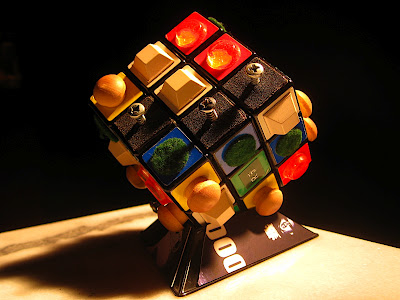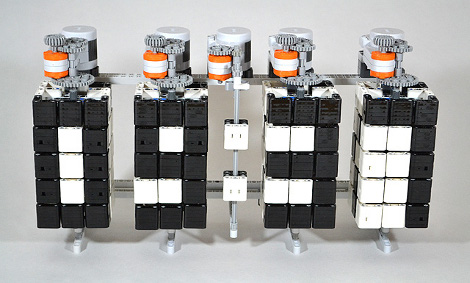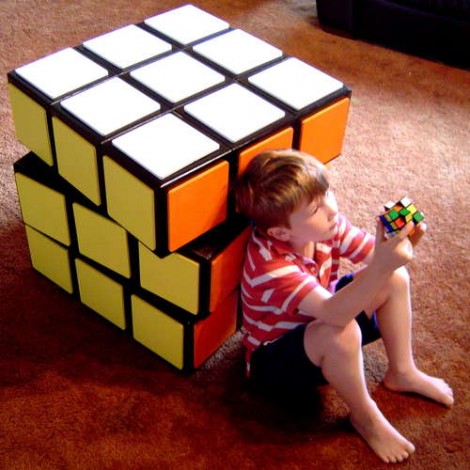
[Javier] must have an awesome academic adviser. For his master’s thesis, he turned a building into a Rubik’s cube.
The Ars Electronic Center in Linz, Austria, is a building with a whole bunch of colored, programmable lights on the facade. [Javier] thought this would make for an excellent Rubik’s cube, and set to work convincing his thesis advisers this idea was possible, and building the hardware and software.
Since only two sides of the building are visible at any one time, [Javier] needed to build a controller for this project. The solution was to build a normal Rubik’s cube and stuff a microcontroller and a FreeIMU in the center. This setup senses the twists and turns of the Rubik’s cube, as well as it’s position in space, effectively creating an interface between the hand and a giant light-covered building.
The Rubik’s cube interface connects to a computer running an app written in openFrameworks. By sensing the direction the cube is oriented, it can automatically display the two sides of the cube facing the user.
There’s a great video showing just how this building-sized Rubik’s cube works. You can check that out below.














